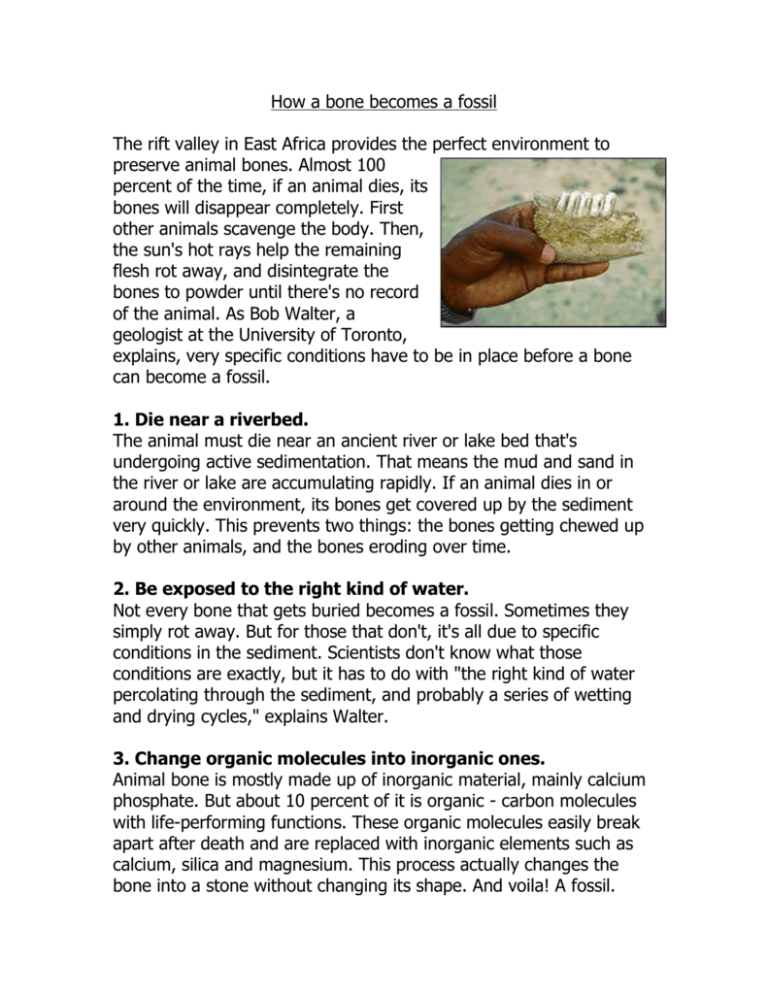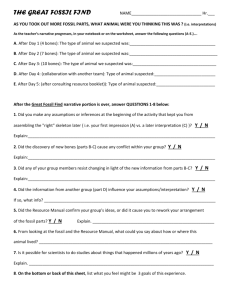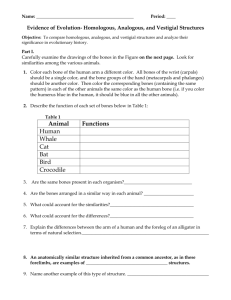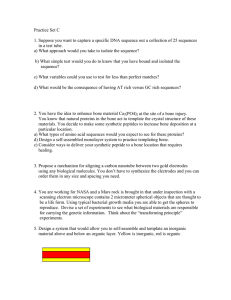How a bone becomes a fossil
advertisement

How a bone becomes a fossil The rift valley in East Africa provides the perfect environment to preserve animal bones. Almost 100 percent of the time, if an animal dies, its bones will disappear completely. First other animals scavenge the body. Then, the sun's hot rays help the remaining flesh rot away, and disintegrate the bones to powder until there's no record of the animal. As Bob Walter, a geologist at the University of Toronto, explains, very specific conditions have to be in place before a bone can become a fossil. 1. Die near a riverbed. The animal must die near an ancient river or lake bed that's undergoing active sedimentation. That means the mud and sand in the river or lake are accumulating rapidly. If an animal dies in or around the environment, its bones get covered up by the sediment very quickly. This prevents two things: the bones getting chewed up by other animals, and the bones eroding over time. 2. Be exposed to the right kind of water. Not every bone that gets buried becomes a fossil. Sometimes they simply rot away. But for those that don't, it's all due to specific conditions in the sediment. Scientists don't know what those conditions are exactly, but it has to do with "the right kind of water percolating through the sediment, and probably a series of wetting and drying cycles," explains Walter. 3. Change organic molecules into inorganic ones. Animal bone is mostly made up of inorganic material, mainly calcium phosphate. But about 10 percent of it is organic - carbon molecules with life-performing functions. These organic molecules easily break apart after death and are replaced with inorganic elements such as calcium, silica and magnesium. This process actually changes the bone into a stone without changing its shape. And voila! A fossil.











